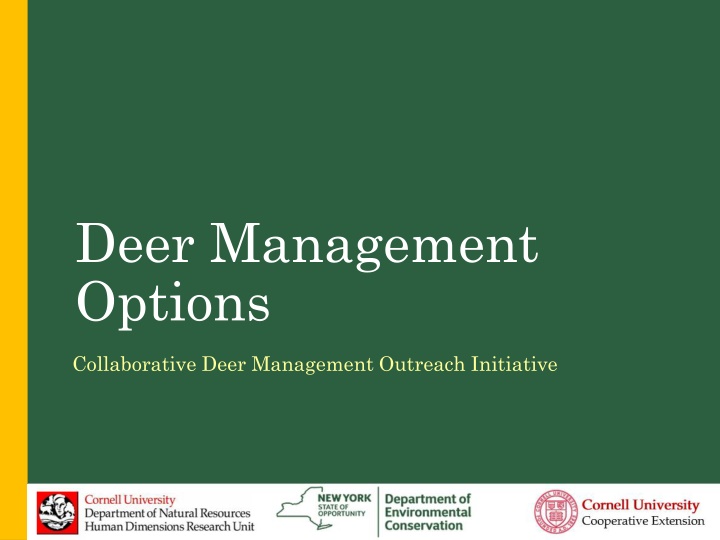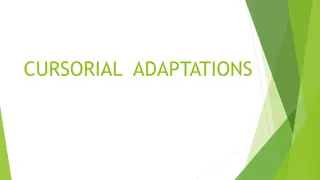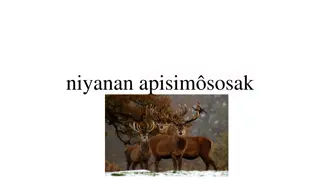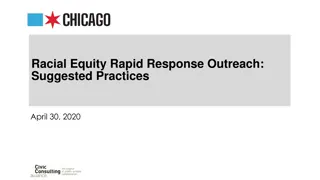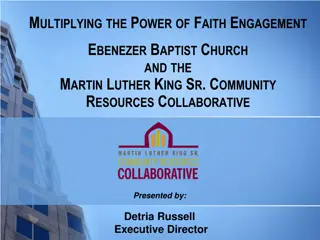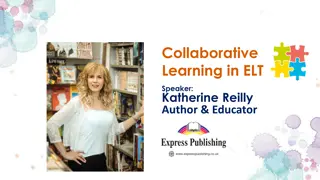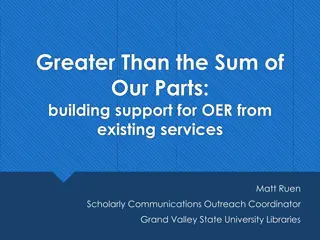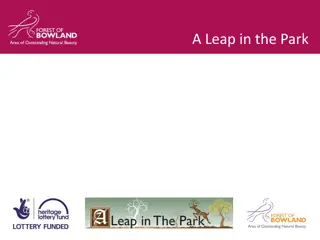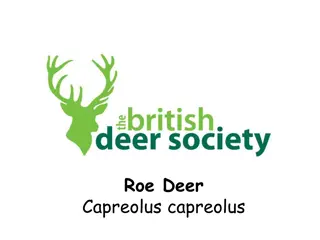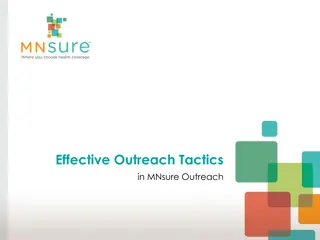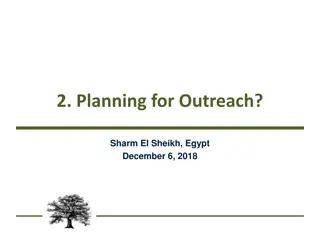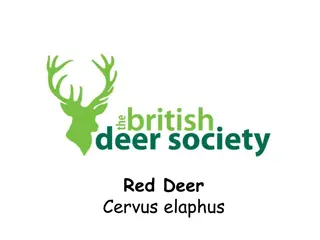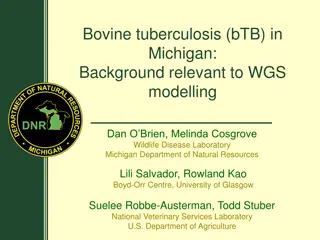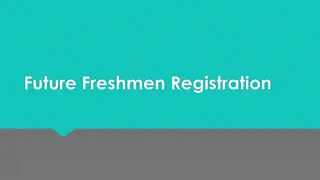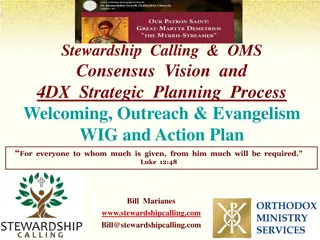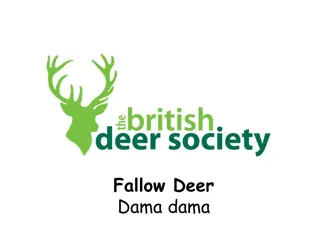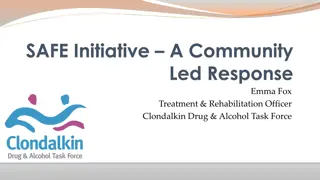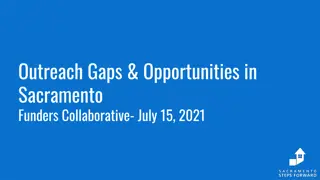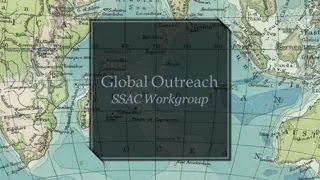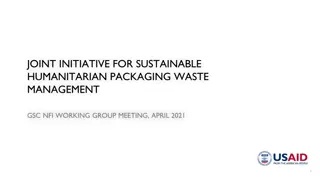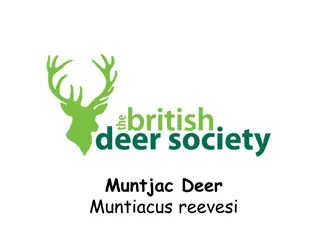Collaborative Deer Management Outreach Initiative
This initiative explores various deer management options in New York at different geographic scales, emphasizing the importance of population management to avoid harmful effects such as habitat damage, deer-related accidents, and health issues. It discusses non-lethal methods for reducing deer-vehicle collisions, site-specific solutions like repellents and fencing, and the ineffectiveness of certain deer management approaches.
Download Presentation

Please find below an Image/Link to download the presentation.
The content on the website is provided AS IS for your information and personal use only. It may not be sold, licensed, or shared on other websites without obtaining consent from the author.If you encounter any issues during the download, it is possible that the publisher has removed the file from their server.
You are allowed to download the files provided on this website for personal or commercial use, subject to the condition that they are used lawfully. All files are the property of their respective owners.
The content on the website is provided AS IS for your information and personal use only. It may not be sold, licensed, or shared on other websites without obtaining consent from the author.
E N D
Presentation Transcript
Deer Management Options Collaborative Deer Management Outreach Initiative
Deer Mgmt. Options in NY- Geographic Scale Recreational Hunting (DMPs) State Geographic Scale Deer Mgmt. Focus Areas WMU Sharp- shooting/ T&T, T&K Controlled Hunts Town DMAP Deer-Vehicle Collisions: Non-lethal methods Fertility Control Community Deer Damage Permits Fencing/ Repellants Property General Targeted Management Option
Letting Nature Take its Course White-tailed Deer Reproductive Potential Left unchecked, deer herds quickly outgrow habitat Long-term habitat damage High numbers incompatible with human interests Deer may be in poor health Large population fluctuations Adult Fawn
Letting Nature Take its Course Many examples of harmful effects of non- management: Great Swamp Nat l Wildlife Refuge, NJ- starvation Block Island, RI- severe ornamental damage Princeton, NJ- deer/vehicle collisions Monhegan Island MN- increased tick abundance Yale Forest, CT- reduced forest regeneration Removing human management does not return things to a natural condition.
Repellents and Fencing Site-specific problems only Repellent effectiveness varies Commercial products may be costly Fencing better for larger and denser sites Many types of fences Both methods work best along with population management
Non-Lethal Means of Reducing Deer-Vehicle Collisions Much has been tried; conclusive studies often difficult to find Wildlife crossings and fencing currently the only methods proven effective
Non-Lethal Means of Reducing Deer-Vehicle Collisions Two methods proven ineffective: deer flagging models and whistles Many other methods tried, but all either need more research or appear ineffective.
Providing Supplemental Food Properly managed deer herds don t need it Artificially raises biological carrying capacity Logistically difficult Expensive Fosters disease transmission, vehicle collisions and predation Over-browsing of nearby vegetation
Trap & Transfer Logistically complex and expensive Not always easy to find relocation sites Injury and capture myopathy ; survival rates may be low Possibility of spreading disease May have some value, but generally impractical and too expensive for free-ranging deer
Sharpshooting/Trap and Kill May be useful in urban and suburban areas Quickest reduction method Expensive; local taxpayers pay Venison usually donated Less efficient than controlled hunting Can be controversial Denies citizens recreation and venison
Fertility Control Can reproduction be managed?
Immunocontraception Stopping normal fertilization or ovulation by the introduction of an injected vaccine Two main types: PZP (Porcine Zona Pellucida) GnRH (Gonadotropic Releasing Hormone) Both work by inducing the production of antibodies that attack the does own system, preventing fertilization or ovulation
Immunocontraception Both work at individual level Other issues with PZP Deer must be captured and tagged High proportion of deer (90%+) must be treated Need annual boosters None registered for use in NYS Considered experimental; permits needed Viable only for small, isolated deer herds.
Surgical Sterilization One and done Veterinarians only Cost about $1,000 each, but rises rapidly Experimental only; permits needed High proportion of deer (90%+) must be treated
Predator Reintroduction Wolves, mountain lions Can control a deer herd, but usually only at lower deer densities Predator-prey interactions often complex and variable Much of New York unsuitable habitat Must be biologically feasible and socially acceptable
Regulated Hunting Proven effective, efficient and inexpensive All state agencies use Flexible Deer Management Permits (DMPs) main tool Controlled hunts an option May not be appropriate or desired in all locations (i.e. urban\suburban) https://www.bowhunting.com/wp-content/uploads/2014/overhunting-stands/bow-hunter-in-tree.jpg
Regulated Hunting May be additional options for hunting in future (may need legislative or regulatory changes, though) Many societal and ecological benefits of regulated hunting: Gina Dermody
Regulated Hunting Deer Management Focus Areas (DMFAs) To assist communities manage overabundant deer Additional season and antlerless tags In Tompkins Co. Co. around Ithaca
Regulated Hunting Deer Management Assistance Program (DMAP) Antlerless deer only Essentially a DMP for individual land parcels Site-specific management Improves landowner-sportsman relations Most issued for agricultural damage, but other categories exist
Deer Damage Permits (DDPs) Mainly for farming, when damage can t wait till season Antlerless deer only, with rare exceptions Many standard conditions Participation in Venison Donation Program strongly encouraged Only 2.5% of statewide deer take; 3.6 deer/permit DDPs used more and more for suburban deer management; cheaper than sharpshooting
Deer Harvest Management in NY- Geographic Scale Recreational Hunting (DMPs) State Geographic Scale Multi-WMU or WMU Aggregate Regulations Extended Seasons WMU Post- Season Hunts Deer Mgmt. Focus Areas Town DMAP Community Damage Permits Property Management Intensity
Community-based Deer Management
The Community-based Deer Management Process Recognition of deer problem
Recognition of a Deer Problem High awareness of the issue within the community High awareness of the issue within the community Clarification of the problem Clarification of the problem Belief within the community that a problem exists Belief within the community that a problem exists and something should be done and something should be done
The Community-based Deer Management Process Recognition of deer problem Define management objectives
Define Management Objectives Should relate to the problem (i.e., impacts) Does not require knowing how many deer live in the community Deer-Vehicle Collisions Objective Easily measured 140 120 100 80 60 40 20 0 Future Now
The Community-based Deer Management Process Recognition of deer problem Define management objectives Identify acceptable management methods
Identify Management Methods Acceptable to the community Reasonable cost Time to results Potential for success
The Community-based Deer Management Process Recognition of deer problem Define management objectives Identify acceptable management methods Select management actions
The Community-based Deer Management Process Recognition of deer problem Define management objectives Implementation Identify acceptable management methods Select management actions
The Community-based Deer Management Process Recognition of deer problem Evaluation Define management objectives Implementation Identify acceptable management methods Select management actions
The Community-based Deer Management Process Recognition of deer problem Evaluation Define management objectives Implementation Identify acceptable management methods Select management actions
We can build capacity. . . in institutions in communities in individuals Success is Possible!
Help is Available
